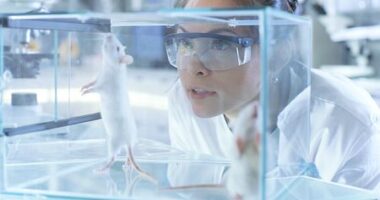Pathway in Pancreas May Help Protect Against Insulin Resistance in Genetic Obesity, Early Study Suggests

Genetic obesity increases the production of proteins involved in freeing pancreatic cells from excess cholesterol, which may help protect their ability to produce insulin, an early study in rats suggests.
The mechanism may also explain why some people with a pre-diabetic precursor condition are able to cope with high cholesterol levels for up to 10 years before becoming diabetic.
The study, “Genetic obesity increases pancreatic expression of mitochondrial proteins which regulate cholesterol efflux in BRIN-BD11 insulinoma cells,” was published in the journal Biosciences Reports.
Scientists in the U.K. sought to understand how the pancreatic cells responsible for producing insulin, referred to as beta-cells, react to excessive cholesterol caused by genetic obesity.
They focused on the role of proteins involved in pumping cholesterol out of cells and delivering it to blood carriers, called high-density lipoproteins (HDL), also known as the “good” cholesterol because these carriers pass it to the liver for elimination. Researchers did so by looking specifically at what happens to these cellular responses in beta-cells.
Insulin is a key hormone that helps keep blood-sugar levels from getting too high or too low. That is why a defect in producing or responding to — becoming resistant to — insulin is the underlying cause of diabetes.
A rat model of genetic obesity (Zucker rats) was used to explore the consequences of obesity on those cellular mechanisms. These rats have excess weight, high insulin (hyperinsulinemia), cholesterol, and triglycerides (hyperlipidemia) in the blood, but normal blood-sugar levels.
Researchers compared changes taking place at a specific molecular network called the Cyp27A1 pathway, which controls the release of cholesterol from cells, in beta-cells from obese rats in comparison with normal rats.
This Cyp27A1 pathway involves proteins working at the mitochondria, the cell’s core unit for producing energy and regulating metabolism.
Results showed that obese rats, compared to lean rats, expressed higher amounts of several proteins involved in this pathway.
By overproducing three such proteins — Cyp27A1, ADX, and ADXR — in rat beta-cells in the lab, the researchers tried to mimic the response seen in the pancreas of obese rats.
Overproduction stimulated beta-cells to pump out cholesterol and load it onto apolipoprotein A-I (apoA-I), a constituent of HDL. Insulin release was also triggered if the same cells were exposed to excessive cholesterol.
The Cyp27A1 pathway is able to control cholesterol transport because it modulates the levels of proteins that carry it out of cells, including ABCA1 and ABCG1. These proteins work as energy-powered pumps that, upon certain molecular triggers that include the binding of HDL, transport cholesterol.
Researchers interpret their findings as a safeguard mechanism that may operate in genetically obese organisms. In beta-cells exposed to high cholesterol levels, proteins from the Cyp27A1 pathway may be upregulated to promote its release.
Because cholesterol accumulation in beta-cells can create conditions of cellular stresses with the potential to disrupt insulin production, this response may help guard against loss of insulin secretion, the researchers wrote.
The ability to induce a response in the Cyp27A1 pathway may, for this reason, be an important protective mechanism, particularly in ‘pre-diabetic’ individuals whose insulin resistance requires a compensatory phase of high insulin production to maintain normal blood-sugar levels, the researchers said.
One in three adults in England are estimated to be on this threshold, which may last for up to 10 years.
“Further work is required to establish the therapeutic potential of the Cyp27A1 pathway in sustaining β-cell capacity during this period,” the team concluded.




